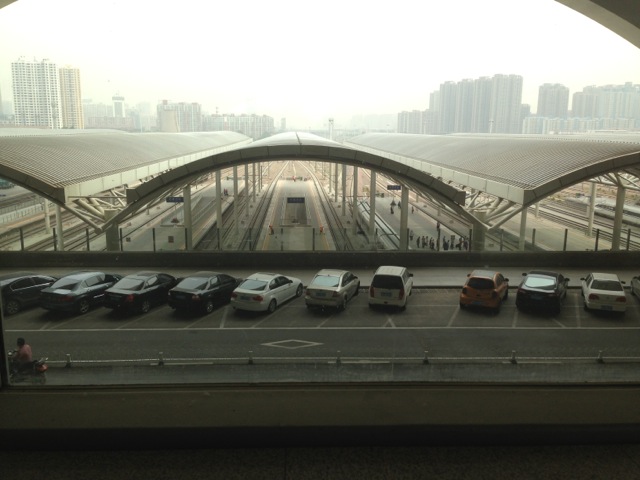The new Street Level China post features, which are published regularly on this blog by David, offer you a view of China from street level — uncensored, unrestricted, unmodified.
Face it, the future of the rails in China lies with HSR. High speed rail landed in China beginning in 2007 with the 6th Nationwide Railway Acceleration Campaign, when trains running as fast as 250 km/h were unleashed. In 2008, even faster speed demons were set loose, to the tune of 350 km/h. The conservative rail minister Sheng Guangzu, however, rolled back speeds in mid-2011, initially finding no plausible reason, but later “backed” by the Wenzhou disaster. A speedbump is not expected any time soon, but already, these machines, rolling at 300 km/h, have transformed the way Chinese people get from A to B.
Shijiazhuang’s new railway hub features 24 platforms (nearly five times the size of the original station), an elevated concourse many times the size of the old, Maoist-era-in-appearance building, and links to the upcoming Shijiazhuang Metro. Soon, cars may disappear altogether from the parking lot in the picture, as many people transfer from HSR to Metros. Already now, many people “park and ride” from this station to Beijing, Zhengzhou, or further afield; it will take most riders just over an hour on fast services to reach these metropolises.
China’s HSR network calls for 16,000 km of express rail, although speeds have been lowered in western China. These short-sighted moves are, however, proving themselves to be failed policies, the best evidence of which can be seen in eastern China. Here, a new 350 km/h line is planned in eastern China’s province of Shandong between the cities of Ji’nan and Qingdao. At present, trains run no faster than 200 km/h on the existing accelerated line. Just think of the benefits the new 350 km/h line can bring the ridership, as well as those along the railway line.
When all is said and done, and when speeds are improved once again, Beijing will only be 8 hours away from Hong Kong, 12 hours from Ürümqi, and 24 hours from the once prohibitively-remote city of Lhasa in Tibet. China’s new revolution is less about political doctrines and more about moving people elegantly from A to B in a highly efficient manner.
